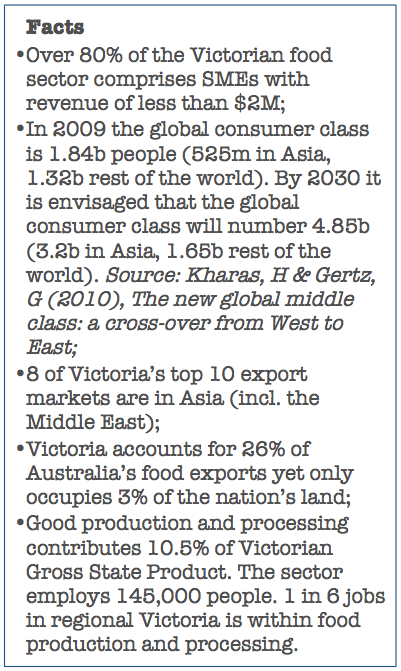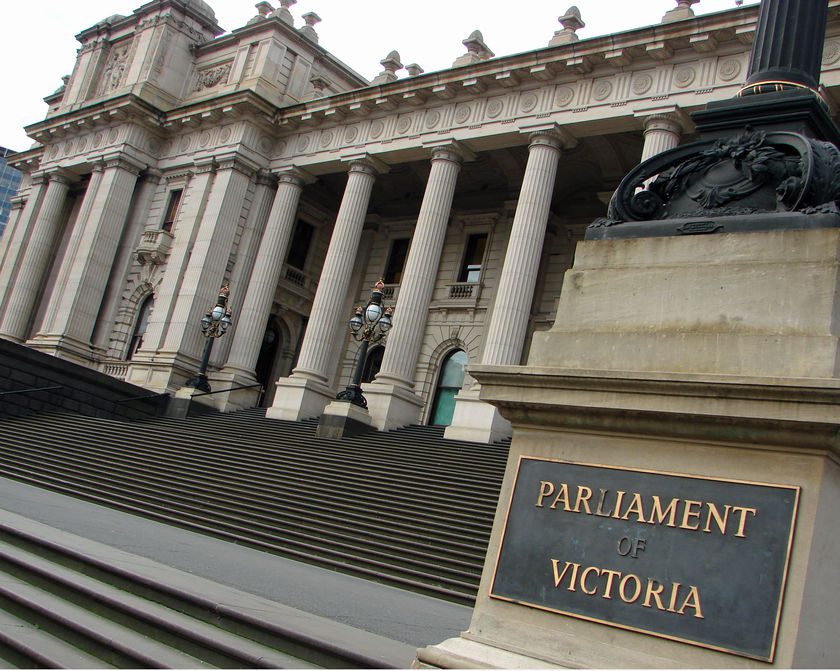Australia is ideally placed to supply a hungry market emerging to our north
Read this article at news.com.au
 It is hard to believe that the consumer class emerging from Mumbai to Shanghai will reach 3 billion people by 2030. That is a lot of mouths to feed!
It is hard to believe that the consumer class emerging from Mumbai to Shanghai will reach 3 billion people by 2030. That is a lot of mouths to feed!
Australian governments across the board have identified primary producers as being exceptionally well placed to capitalise on this dynamic in the markets to our north. But what is the most valuable role that government can play from here on out?
It is our view the macro policy settings are either right, or heading in the right direction. For example, we have, or are working on:
- Free Trade Agreements;
- Targeted Grants Programs;
- International Business Offices;
- Export Strategies; and
- Industry Roundtables
More specifically, Victoria has Food and Fibre Marketing Co-operatives Grants ($5M over 4 years), the Growing Food and Fibre Initiative ($124M over 8 years), an International Engagement Strategy ($50M over 4 years), and the Food to Asia Action Plan.
What we know on the ground is that it is extremely time consuming and expensive for Australian food and fibre producers to establish a sustainable foothold in new offshore markets. Especially where there are substantial cultural differences to be negotiated.
It is here that there is an apparent disconnect between policy settings and achieving aspirational goals for our farmers.
About the only Australian entities that can tough it out establishing new markets are the big players who are doing it anyway.
The challenge therefore is to focus on action that pulls our mid-tier and smaller primary producers into the exporting mix.
These are the businesses that are unlikely to have the resources, or the inclination to dig deep into their pockets and spend considerable time away from their enterprises to make the most of this evolving landscape and government encouragement. They also produce some of the nation’s most sought after products.
So what should be done?
We are of the view that there are plenty of activities that could be undertaken to make it worthwhile for our more boutique and niche suppliers to join this potential gold rush; such as national/state/sectoral branding, educational and cultural exchange, international office and secretarial support, and an event schedule that includes regional showcases of what Australian farmers have to offer the world.
A lot of the big picture work has already been carried out. It is now time to create an environment that sees our primary producers making the most of government policy and international infrastructure to truly incentivise them to take their products to the world.
We see taking this action as translating the bigger picture into stronger regional communities, more employment, and more profitable and innovative businesses. This makes both economic and political sense.
As Andrew “Twiggy” Forrest recently observed, we need a “Team Australia” and access to expertise can help deliver on these aspirations.
In a Victorian context we think that the simplest place to start would be to develop a “road map” for our primary producers that illuminates the path to market. Such a tool could, and should, be taken to our regions to highlight the opportunities and support that exist; as well as demystify the exporting process for those who are not doing it. By increasing the number and diversity of Victorian enterprises exporting, we will see these excellent policies deliver maximum benefit to the State.
Of course this is only the first play in what will be a long and beneficial game. There is plenty more work to be done with one of the major challenges on the government side being to translate theory into practice.
AN
Angus Nicholls has a depth of experience in both the political and commercial worlds.
Over a 15-year career, Angus has been a senior government policy advisor at Federal level, a Councillor at Local government level and the General Manager of one of Australia’s largest seafood businesses.
He has developed a detailed understanding of primary produce, agricultural and industry policy at all levels of government and a deep understanding of local government planning, environmental and community amenity issues.
He is now a Senior Associate and the strategic communications firm Robert Masters & Associates.








Leave a Reply
Want to join the discussion?Feel free to contribute!